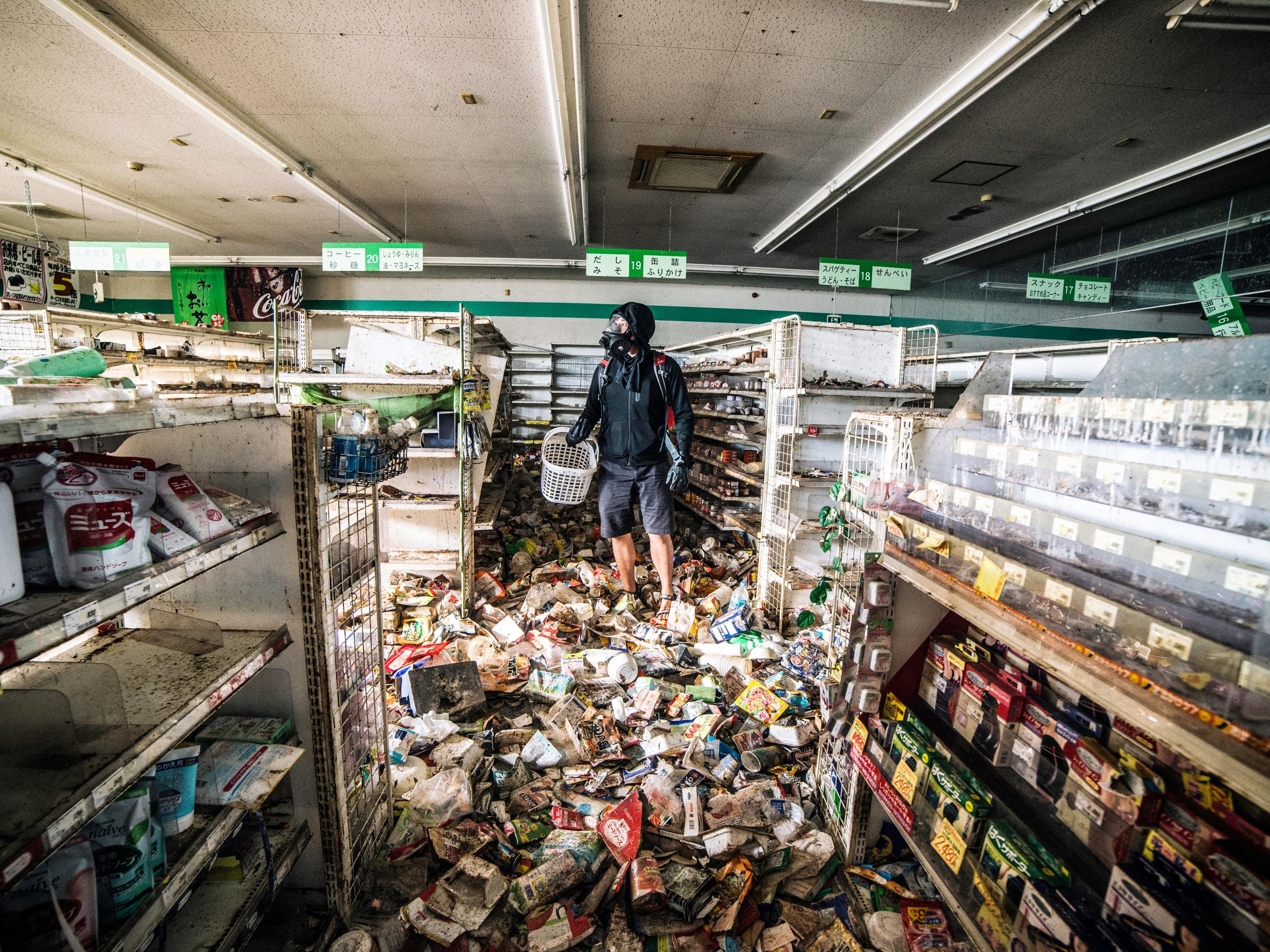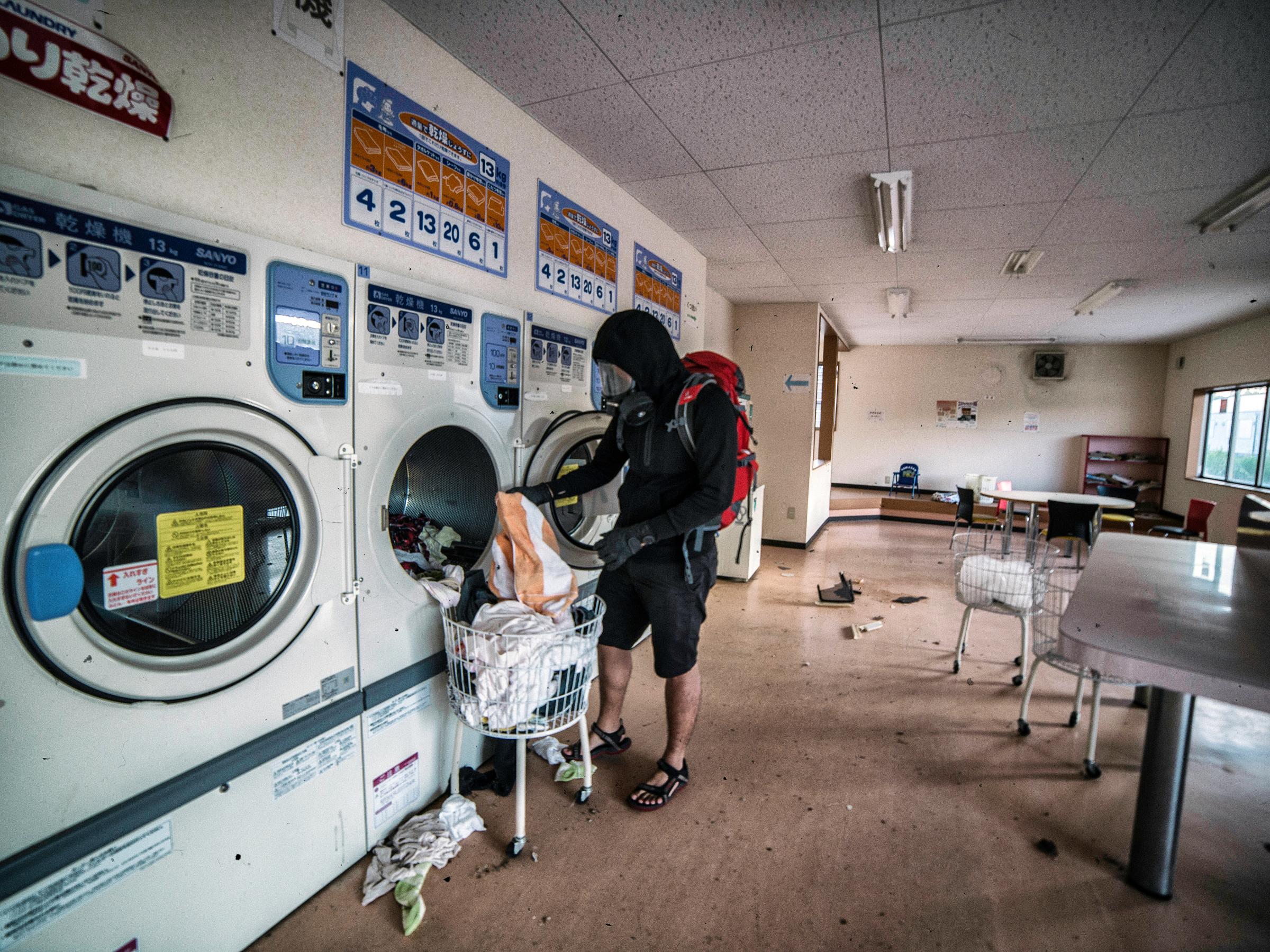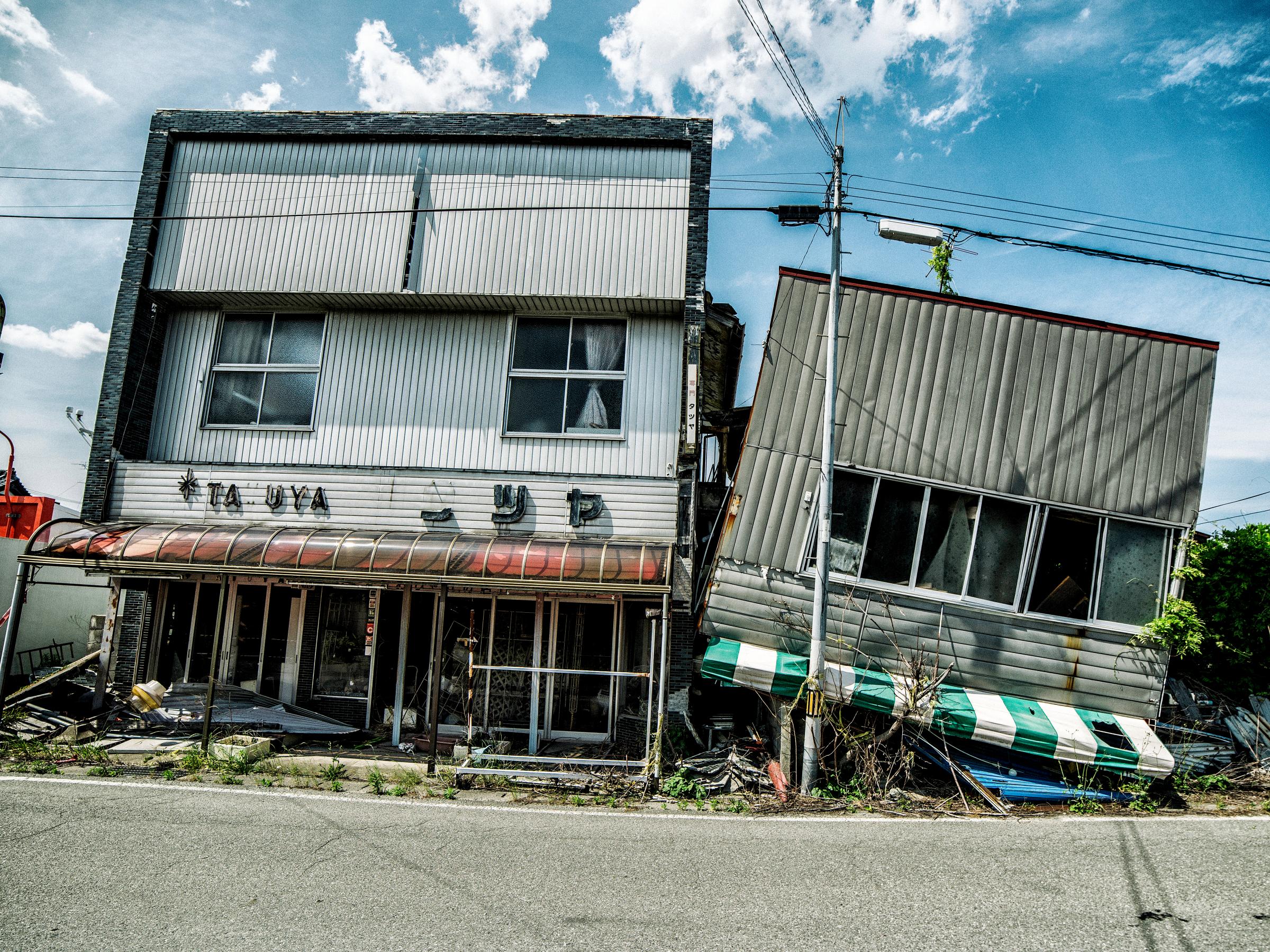
No catastrophe keeps the world from spinning, but on the afternoon of March 11, 2011, it was pushed ever so slightly on its axis. The earthquake that shook Japan that day was the most powerful in the country’s history — powerful enough to alter the earth’s rotation, powerful enough to churn up a tsunami that killed thousands, and, for those lives proximate to the Fukushima Daiichi nuclear power plant, powerful enough to halt time indefinitely. Five years after the Fukushima meltdown — the worst nuclear disaster ever, after Chernobyl — wall calendars are still flipped to March 2011. In convenience stores, bottles of Listerine sit unsold on their shelves. So swift was the postmeltdown evacuation that at laundromats, you can still find towels and underwear that had been left churning in the washing machines. “It’s only fit for ghosts,” 77-year-old Tatsuko Shiga told TIME in 2014.
Last month, the 27-year-old Malaysian photographer Keow Wee Loong ventured — ghostlike, if you will — into the Fukushima exclusion zone, within the 20-km radius around the old power plant. “I like to photograph places where people don’t go,” he tells TIME. In the past, he has scaled skyscrapers and volcanoes; this venture seems comparatively mortal, and eerily so. The photos he shot capture Japanese life in suspended animation, at once surreal and too real.
It probably goes without saying that he was not supposed to be there. Trains no longer run from Tokyo all the way to the contaminated district, and so he drove four hours north with his assistant Sherena Ng. By his account, he did not wear a radiation suit, because he lost his cash and credit card in Tokyo and could not afford to buy one.
It’s impossible to know at this point how much radiation he was exposed to. After the meltdown, fallout was distributed unevenly throughout the area surrounding the plant: when TIME visited the facility in 2014, a dosimeter’s readings varied drastically within a range of only several hundred meters. Radiation cleanup efforts have been diligent but spotty.
Keow says they were more concerned about getting caught, since they forewent the hassle of procuring the necessary permits. To avoid police detection, he says, they hiked into the exclusion zone — 25 km through the woods each way, starting at 2 in the morning. They spent 12 hours in the towns of Tomioka, Namie, Futaba and Okuma, wandering through the uncanny shadows of a truncated world. Weeds push through the cracks of abandoned streets. Keow found a box of unopened PlayStations at one location and a lot of used cars (formerly for sale) in another. Magazines dated from early 2011 are still perched on the shelves of an abandoned bookstore.
Though he stresses that his work is not political, Keow says he intends to bring awareness to the “devastating effects” of nuclear power.
“Not many people have access to this area,” he says. “I wanted to be the one to document it.”
He appears in many of his photographs, thanks to a tripod he brought with him. We see him rifling through the clothes left at a laundromat and reading the magazines that had been shaken to the ground in the tremors of the earthquake. He wasn’t lying when he said he didn’t wear a hazmat suit — instead, he’s in shorts, sandals, a hoodie and a ventilation mask. I ask why he chose to compose these shots as self-portraits.
“Because a photo without humans in it is soulless,” he says.
[Update 7/22/16: In the days following TIME’s publication of Keow Wee Loong’s photographs from Fukushima, a number of readers expressed what they saw as several issues with the collection of images. Some said that Keow’s decision to enter and photograph the streets and commercial properties of Fukushima was disrespectful to the Japanese who have worked hard to pick up the pieces in the wake of the 2011 disaster; others accused him of fabricating the images or lying about their provenance.
TIME has confirmed the veracity of the photos, which were also published by a number of other sites (among them CNN and The Guardian). But in light of the conversation that followed, we asked Keow for his response to the negative reader reactions. (Note: in the story that accompanied the photos, the name of the town of Tomioka was misspelled.)
“I believe in the documentation and preservation of historical events because it can speak volumes about a country’s perseverance and unity during times of turmoil,” Keow told TIME on Friday. “I went into Fukushima with that mindset — to document the devastating consequences and to spread awareness of the long-lasting effects of nuclear power. I focused on the unfortunate consequences — instead of the improvements — because it would cause people to reflect more. I deeply apologize to the residents of Fukushima if they felt I disrespected their home. My intentions were not malicious.”]







More Must-Reads from TIME
- How Donald Trump Won
- The Best Inventions of 2024
- Why Sleep Is the Key to Living Longer
- Robert Zemeckis Just Wants to Move You
- How to Break 8 Toxic Communication Habits
- Nicola Coughlan Bet on Herself—And Won
- Why Vinegar Is So Good for You
- Meet TIME's Newest Class of Next Generation Leaders
Contact us at letters@time.com